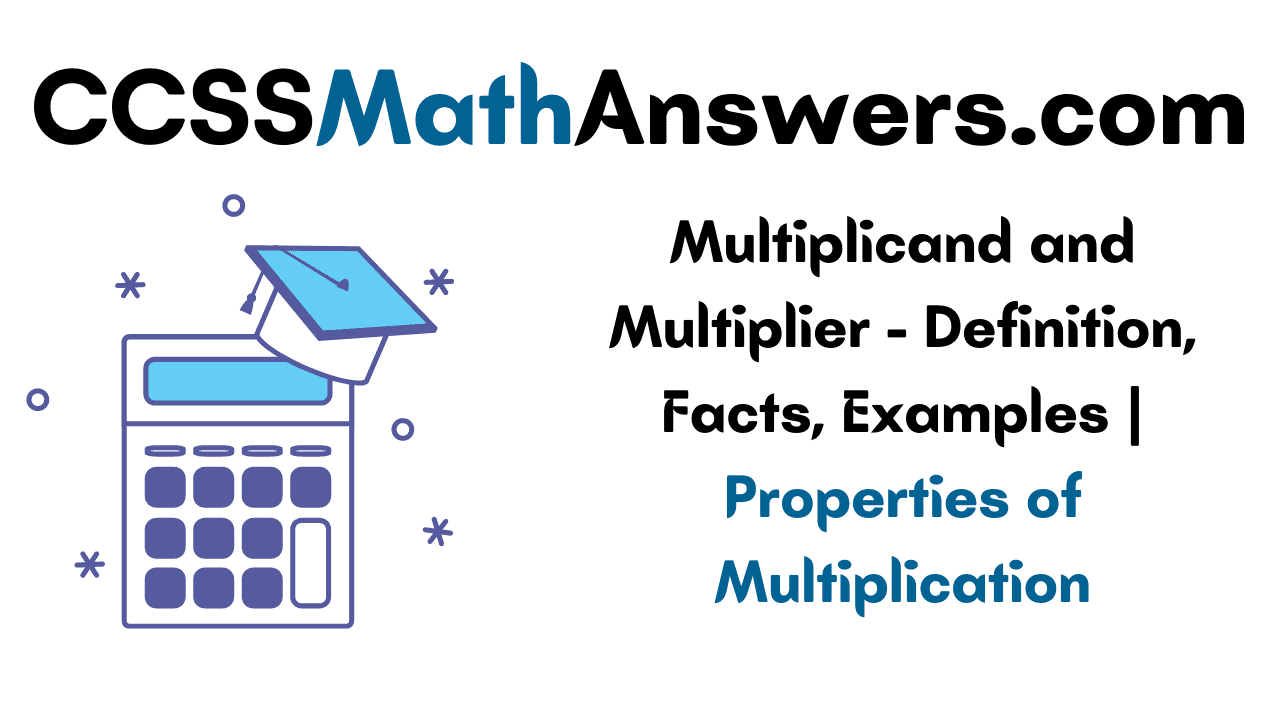I know all the students are familiar with the arithmetic operations like addition, subtraction, multiplication, and division. In this article, we will discuss briefly multiplication. Most of the students might be confused about the multiplier and multiplicand in the numbers. By reading this page you can clarify all your doubts regarding Multiplicand and Multiplier, properties of multiplication with examples.
Do Refer:
- Worksheet on Multiplicand and Multiplier
- Facts about Multiplication
- Factors and Multiples by using Multiplication Facts
- Multiplication and Division
What is Multiplicand in Math?
Multiplicand: The Multiplicand is the number taken or multiplied. The number to be multiplied is called multiplicand. Usually, the multiplicand is placed first or top. So, the first number is called multiplicand.
Multiplier – Definition
Multiplier: The number with which we are multiplying is called the multiplier. A multiplier is a simple factor that increases the value. Sometimes the first factor will be a multiplier and the second number becomes a multiplicand. The multiplier is placed second or bottom number.
What is Multiplication?
The multiplication is written using the ‘×’ symbol or the ‘.’ sign in an arithmetic operation. The numbers to be multiplied are called ‘factors’. Multiplication is repeated addition. It is the product of multiplier and multiplicand. The result of the multiplication is called product. For better understanding let us see one example of multiplication.
Multiplicand × Multiplier = Product or Multiplication
Example:
5 × 6 = 30
Here 5 is the multiplier
6 is multiplicand
and 30 is the product.
Properties of Multiplication
Let us recall the properties of multiplication to solve the problems. Here we have provided the properties of multiplication with examples.
1. Commutative property of multiplication:
The product of the numbers does not change if we change the order of the numbers.
Example:
2 × 3 = 6, 3 × 2 = 6
So, 2 × 3 = 3 × 2
Hence it is proved that the product does not change if we change the order of two numbers.
2. Associative Property of Multiplication:
The product of three or more numbers will not be changed if we change the grouping of the given numbers.
Example:
(6 × 2) × 5 = 12 × 5 = 60 or,
(2 × 6) × 5 = 12 × 5 = 60 or,
(2 × 5) × 6 = 10 × 6 = 60
3. One property of multiplication:
The product of any number and 1 is the number itself.
Example:
2 × 1 = 2
12 × 1 = 12
4. Zero property of multiplication:
The product of any number and zero is zero.
Example:
Let us multiply the number and zero you get the product as 0.
12 × 0 = 0
43 × 0 = 0
43531 × 0 = 0
5. Distributive Property of Multiplication:
The product of the number and the sum of two numbers is always the same as the sum of the product of the numbers.
Example:
6 × (2 + 5) = 6 × 7 = 42
6 × 2 + 6 × 5 = 12 + 30 = 42
Therefore, 6 × (2 + 5) = 6 × 2 + 6 × 5 = 42
Also, check the product with the difference of two numbers is always the same as the difference in the numbers’ product.
Example:
6 × (5 – 2) = 6 × 3 = 18
(6 × 5) – (6 × 2) = 30 – 12 = 18
So, 6 × (5 – 2) = (6 × 5) – (6 × 2)
Multiplicand and Multiplier Examples
Check out the problems given below to know the facts of multiplicand and multiplier. Practice the problems given below and improve your knowledge.
Example 1.
What is the product of the two-digit numbers 78 and 12?
Solution:
First arrange the given numbers in the columns.
The first number 78 becomes multiplicand.
The second number 12 becomes a multiplier.
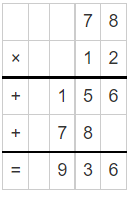
The product of the two-digit numbers 78 and 12 is 936.
Example 2.
What is the product of the three-digit numbers 138 and 100?
Solution:
First arrange the given numbers in the columns.
The first number 138 becomes multiplicand.
The second number 100 becomes a multiplier.
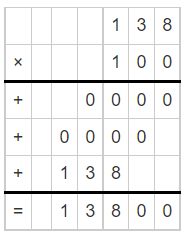
Thus the product of the three-digit numbers 138 and 100 is 13800.
Example 3.
Multiply 9 and 3.
Solution:
We have to find the product of 9 and 3.
9 is the multiplicand and 3 is the multiplier.
9 × 3 = 27
Multiplicand × Multiplier = Multiplication
Example 4.
Multiply 468 and 16.
Solution:
First arrange the given numbers in the columns.
The first number 468 becomes multiplicand.
The second number 16 becomes a multiplier.
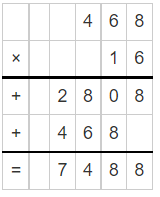
Thus the product of 468 and 16 is 7488.
Example 5.
Sid earns $15,000 per month. What is his income for 12 months?
Solution:
Given,
Sid earns $15,000 per month.
Income for 1 month = $15,000
Income for 12 months = ?
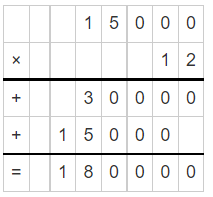
$15,000 × 12 = $180000
FAQs on Multiplicand and Multiplier
1. Which is meant by multiplier and multiplicand?
The number to be multiplied is called the multiplicand. The number with which we multiply is called the multiplier. Thus the result obtained is known as the product.
2. What comes first multiplier or multiplicand?
The number to be multiplied is the multiplicand, and the number by which it is multiplied is called the “multiplier”. Usually, the multiplier is placed first and the multiplicand is placed second. However, sometimes the first factor is the multiplicand and the second the multiplier.
3. What is called Multiplicand?
The multiplicand is the name given to a number being multiplied by another number. Another name for multiplicand is a factor.
